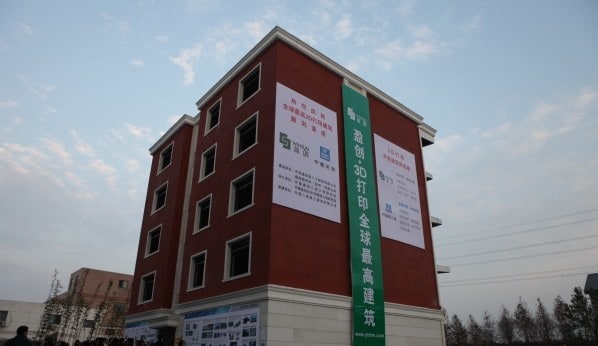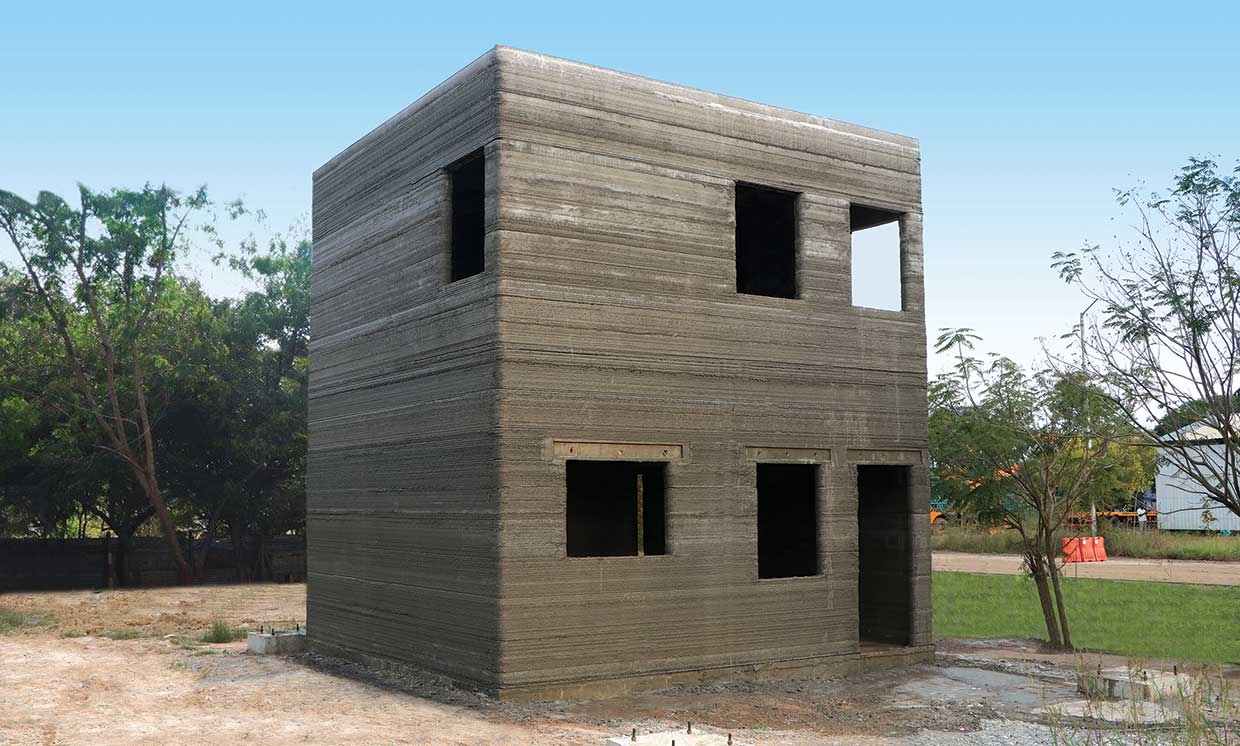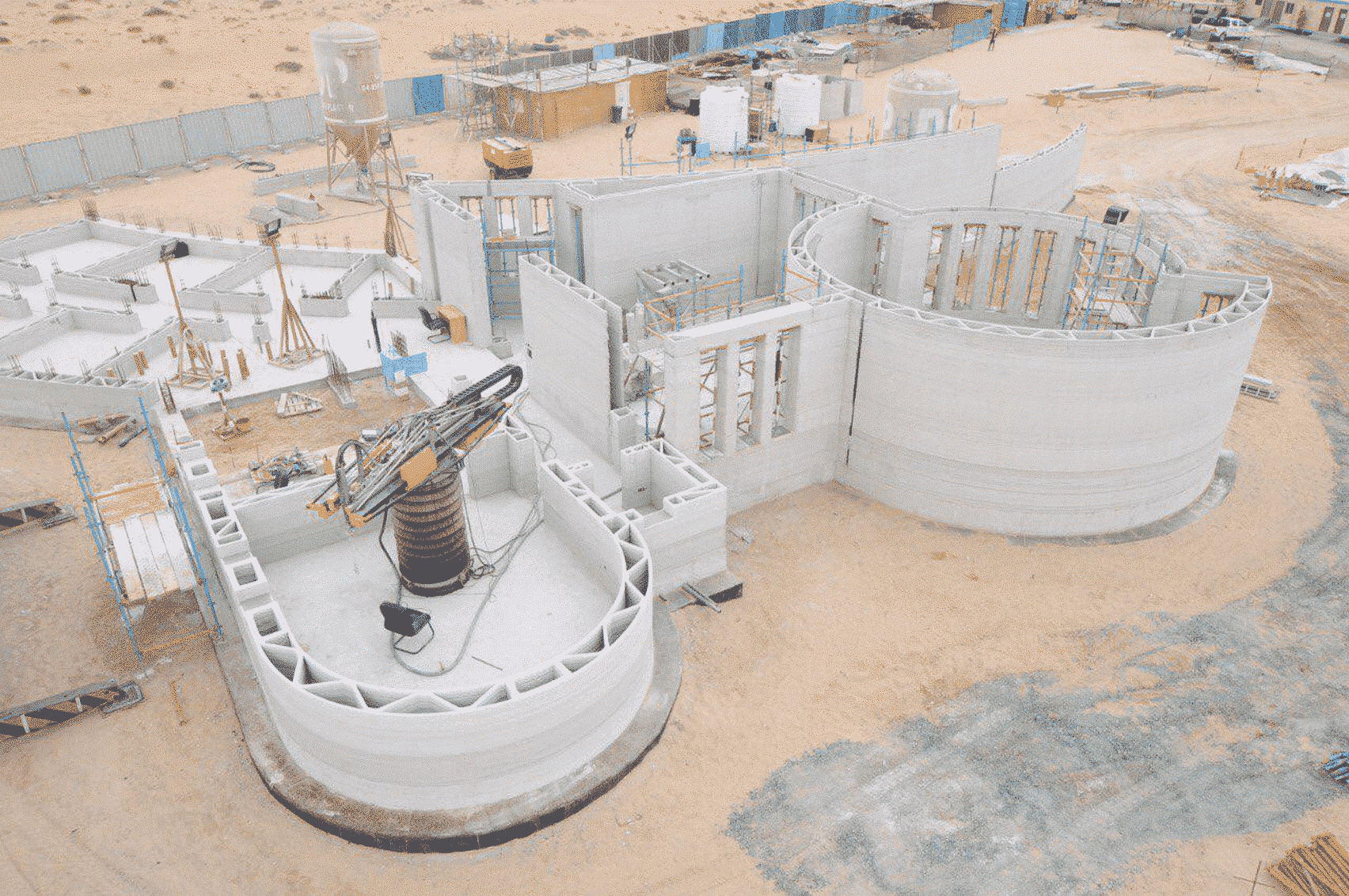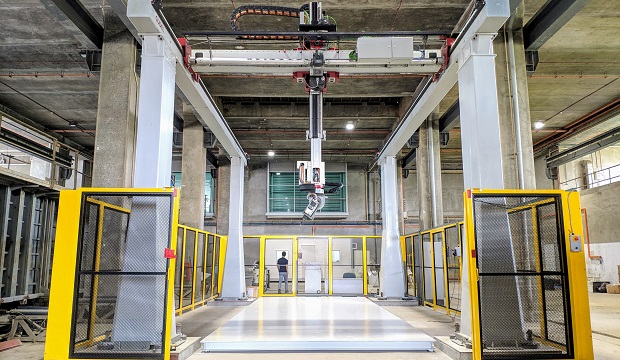Yes, that 3D-printed mansion is safe to live in
Written by: Tuan C. Nguyen
Publish Date: February 05, 2015


Back in April, a team of Chinese construction workers used a 3D printer to construct houses. By day’s end, there were 10 standing. They were compact and fairly bare bones — nothing much to look at besides the “wow!” factor of there being as many as — count them — 10. But this time around, those same builders have taken the wraps off an achievement that’s roundly more impressive.
In Suzhou Industrial Park, adjacent to Shanghai, stands a five-story structure that the WinSun Decoration Design Engineering firm claims is “the world’s tallest 3D-printed building.” Next to it is the equally massive 3D-printed mansion, which measures 11,840 square feet. Like the previous buildings, the walls are comprised of a mix of concrete and recycled waste materials, such as glass and steel, and formed layer by printed layer. The company stated that the total cost for the mansion was roughly $161,000.
In a broader sense, this latest feat is yet another indication of how rapidly additive manufacturing techniques are advancing. Once used primarily as a means to quickly render miniature model versions of products, the technology has reached a point where large-scale printers are now capable of making life-sized working creations, such as automobiles, in mere days. For instance, it took less than 48 hours for start-up Local Motors to print a two-seater called the Strati into existence and drive it off the showroom.
Many of these designs, however, typically don’t amount to much beyond being passion projects meant to push 3D printing into new frontiers and drum up some publicity along the way. One example of this is the massive 3D Print Canal House that’s being constructed entirely on-site along a canal in Amsterdam, a process that’s slated to take longer and is less feasible than standard construction, Phil Reeves of UK-based 3D printing research firm Econolyst recently told CNN.
More promising, though, is a system developed by Behrokh Khoshnevis, a University of Southern California engineering professor. His concept machine, called Contour Crafting, involves a clever combination of mechanical cranes and 3D layering to print and assemble entire homes simultaneously — complete with insulation and indoor plumbing — in less than a day.
The approach employed by WinSun isn’t anywhere near that level of sophistication, but it may well prove to be the most practical — at least thus far. There is some labor and equipment costs that comes from trucking in and piecing together the various sections on-site, though the manner in which it all comes together is comparable to the ease of prefab assembly. It’s also reportedly greener thanks to the addition of recycled materials.
To pitch the advantages of their technology, the company held a news conference to announce that they had taken on orders for 20,000 smaller units as well as highlight some significant cost-cutting figures. According to industry news site 3Der:
The sheer size of the printer allows for a 10x increase in production efficiency. WinSun estimates that 3D printing technology can save between 30 and 60 percent of building materials and shortens production times by 50 to even 70 percent, while decreasing labor costs by 50 up to even 80 percent. Future applications include 3D printed bridges or tall office buildings that can be built right on site.
WinSun did not respond to a request to disclose how they arrived at those numbers, but Enrico Dini, an Italian civil engineer and chairman of competing start-up Monolite, says that he suspects the calculations may be a tad bit inflated. Still, he emphasized that his own data does back up the claim that, compared to conventional methods, layering may boost overall efficiency.
“It would be very difficult to fabricate such large sections with traditional concrete casting,” he says. “With 3D printing, you have a lot less waste because you’re only printing out as much material as you need and you can custom shape whole sections on the spot, which can be a big challenge.”
One major concern is whether these large-scale dwellings can hold up over time against the elements. According to 3Der, Ma Rongquan, chief engineer of China Construction Bureau, inspected the building’s structural integrity and found them to be up to code, but was careful to note that state officials have yet to establish specific criteria for assessing the long-term safety of 3D printed architecture.
And as Dini, who supports the technology, points out, there is the possibility that the use of additive manufacturing may pose some degree of risk. “The only issue is that as the layers of concrete are bonded together, they’re drying at slightly different rates and that’s not very ideal,” he explains. “So there’s maybe a higher chance of it fracturing at the contact point if there’s a strong enough force at play.”
Regardless, Dini says he’d feel completely safe going inside any floor of either building since construction materials used today are likely to contain special additives to enhance strength and resistance. One such formulation, fiber-reinforced Ductal, has been shown in some tests to be 10 times stronger and last twice as long as regular concrete. He stressed that walls should also be tested to ensure that other properties, such as acoustics, ventilation and thermal insulations are on par with existing buildings.
“In Italy, building standards are extremely strict,” he noted. “But I can’t say I can say the same about China.”
About the Author
This article is written by Tuan C. Nguyen
Read the original post here.


